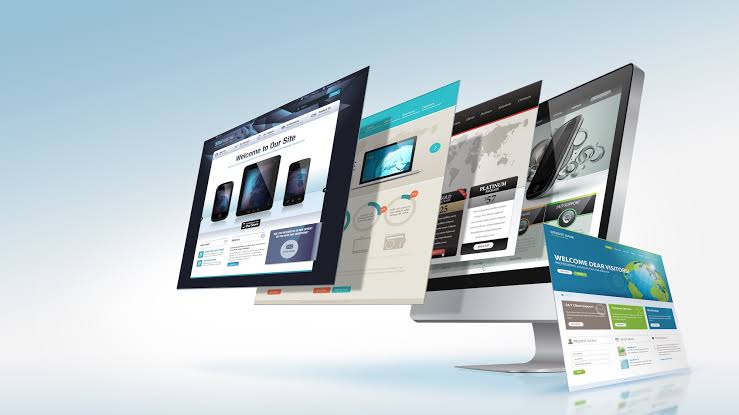
Your website is more than just an online presence—it’s a powerful marketing tool that can drive leads, boost conversions, and establish your brand authority. In today’s digital landscape, simply having a website isn’t enough; you need a strategic approach to turn it into a 24/7 sales machine. From SEO optimisation to user-centric design, your website should work for you , attracting and nurturing potential customers effortlessly. This blog dives deep into how to transform your website into your best marketing tool, using smart content strategies, SEO tactics, and conversion-focused design. Whether you’re a startup or an established business, leveraging your site’s full potential can skyrocket your growth. Ready to revamp your website and make it a revenue-generating asset? Let’s explore how to make your website your best marketing tool—step by step.
Table of Contents
- Why Your Website Is Your Most Powerful Marketing Tool
- SEO Optimization: Strengthening Your Website as a Marketing Tool
- Content Strategy: Fueling Your Website’s Marketing Power
- User Experience (UX): Designing for Conversions
- Analytics and Data: Measuring Your Website’s Impact as a Marketing Tool
- Conclusion: Time to Transform Your Website into a Powerful Marketing Tool
Why Your Website Is Your Most Powerful Marketing Tool
Your website isn’t just a digital storefront—it’s your most powerful marketing tool. It works around the clock, attracting, engaging, and converting visitors into loyal customers. Think of it as your best salesperson, delivering your brand message to a global audience.
A well-optimised website not only increases your online visibility but also boosts your credibility. When potential customers land on your site, their experience determines whether they stay or bounce. This is why it’s crucial to treat your website like an active part of your marketing strategy—not an afterthought.
By leveraging smart SEO practices, content strategies, and user-centric design, you can turn your website into a lead-generating machine. Let’s break down the key elements to maximize your site’s marketing power.
SEO Optimisation : Strengthening Your Website as a Marketing Tool
Search Engine Optimisation (SEO) is the driving force behind your website’s success. Without SEO, even the most stunning website can remain invisible.
To make your website a true marketing tool, focus on:
- Keyword Research: Identify high-ranking keywords your target audience is searching for. Incorporate these naturally throughout your content.
- On-Page SEO: Optimize meta titles, descriptions, headers, and images to enhance search engine visibility.
- Internal Linking: Guide users (and search engines) through your site by linking relevant pages together.
- Mobile Optimization: With most users browsing on their phones, ensure your website is mobile-friendly for better rankings and user experience.
By mastering SEO, your website doesn’t just exist—it thrives, attracting organic traffic and boosting conversions.
Content Strategy: Fuelling Your Website’s Marketing Power
Content is the heart of your website and a critical component of your marketing tool. Every blog post, product description, and landing page should serve a strategic purpose—inform, engage, and convert.
Here’s how to craft a winning content strategy:
- Focus on Value: Create high-quality content that solves problems and answers your audience’s questions.
- SEO-Optimized Blogs: Use a mix of focus keywords and secondary keywords to improve search rankings.
- Clear CTAs (Call-to-Actions): Each page should guide visitors to the next step—whether it’s subscribing, booking a call, or making a purchase.
- Storytelling: Build emotional connections through compelling brand stories.
Strategic content not only boosts SEO but also keeps visitors hooked, increasing dwell time and reducing bounce rates.
User Experience (UX): Designing for Conversions
A clunky, confusing website drives visitors away. To make your website your best marketing tool, design for seamless user experience:
- Fast Load Times: Slow pages frustrate users and hurt SEO. Optimize images and use caching tools.
- Intuitive Navigation: Make it easy for visitors to find what they need with clear menus and search bars.
- Strong Visual Hierarchy: Highlight key elements like CTAs and unique selling points with contrasting colors and strategic placement.
- Accessibility: Ensure your site is usable for everyone, including those with disabilities.
A smooth, user-friendly website increases engagement, lowers bounce rates, and drives conversions—turning casual visitors into loyal customers.
Analytics and Data: Measuring Your Website’s Impact as a Marketing Tool
Your website’s transformation into a marketing tool doesn’t end with design and content—it’s about continuous improvement through data.
- Track Metrics: Use Google Analytics to monitor traffic, bounce rates, and user behavior.
- A/B Testing: Test different headlines, CTAs, and page layouts to see what resonates most.
- Heatmaps: Identify where users click and scroll to optimize design and content placement.
Data-driven insights help you refine your strategy, ensuring your website evolves with user preferences and search engine algorithms.
Conclusion: Time to Transform Your Website into a Powerful Marketing Tool
Your website isn’t just a digital placeholder—it’s your most valuable marketing tool. By mastering SEO, crafting strategic content, optimizing user experience, and leveraging data, you can turn your website into a revenue-generating asset.
Ready to unlock your website’s full potential? Start by auditing your current site, identifying gaps, and implementing these powerful strategies. Don’t let your website sit idle—transform it into a dynamic, customer-converting powerhouse today!
Let’s supercharge your website—reach out to us for a personalized marketing strategy tailored just for you.





